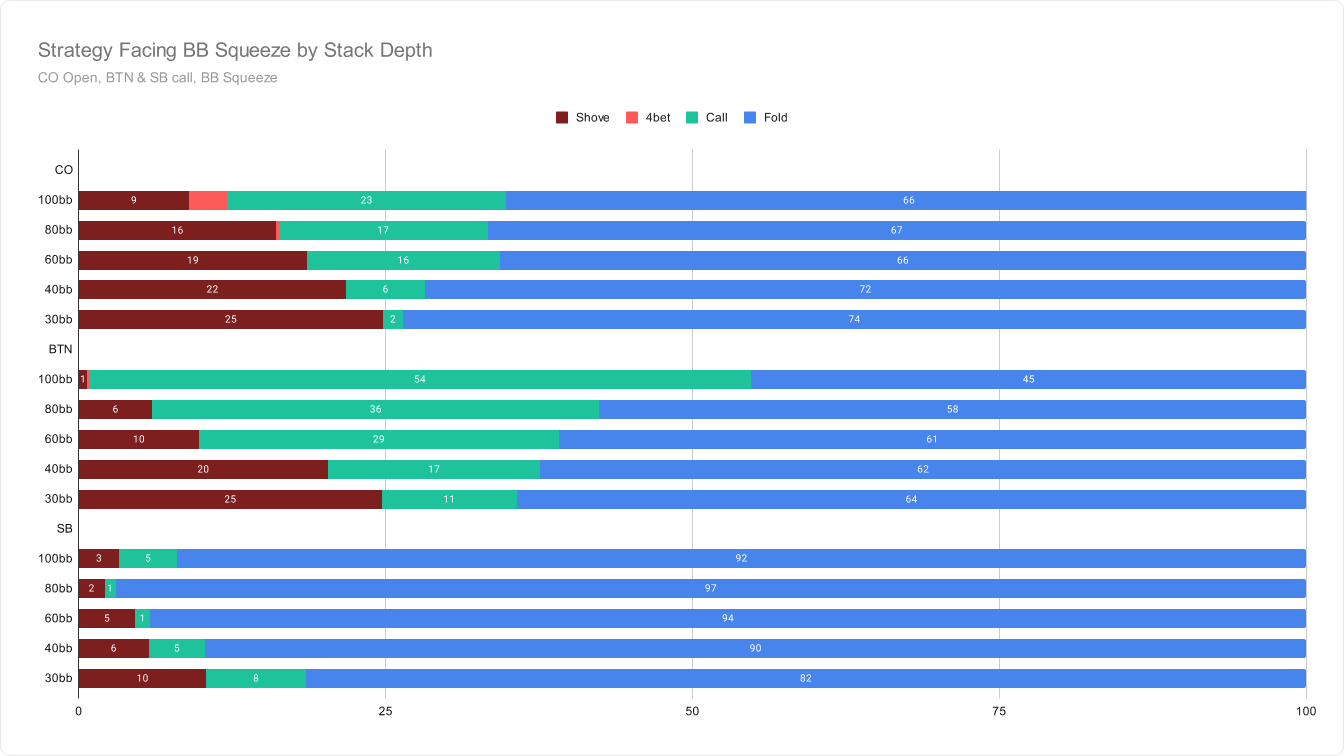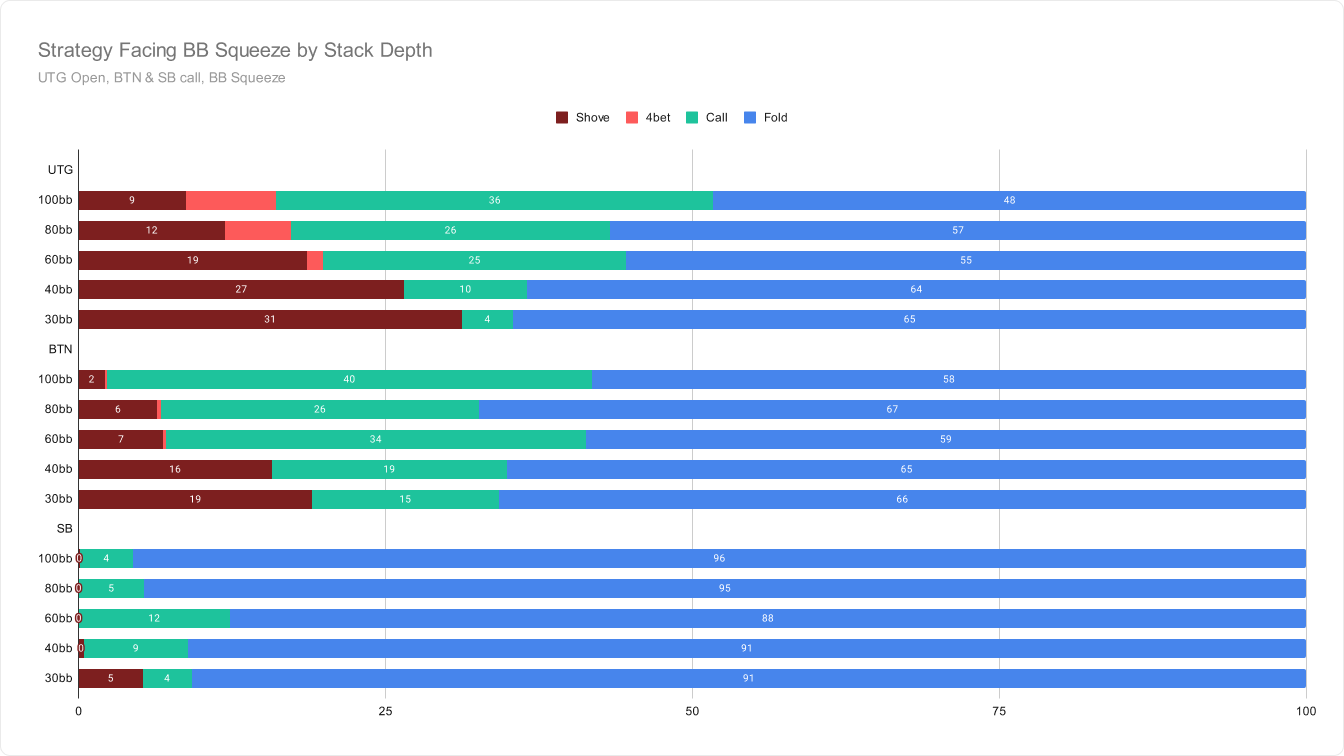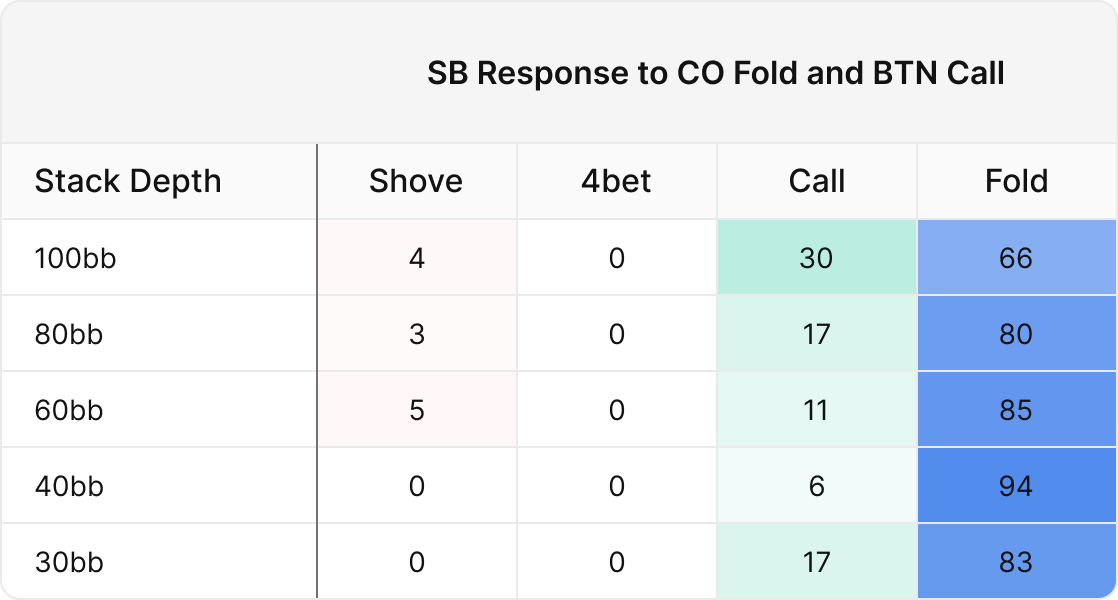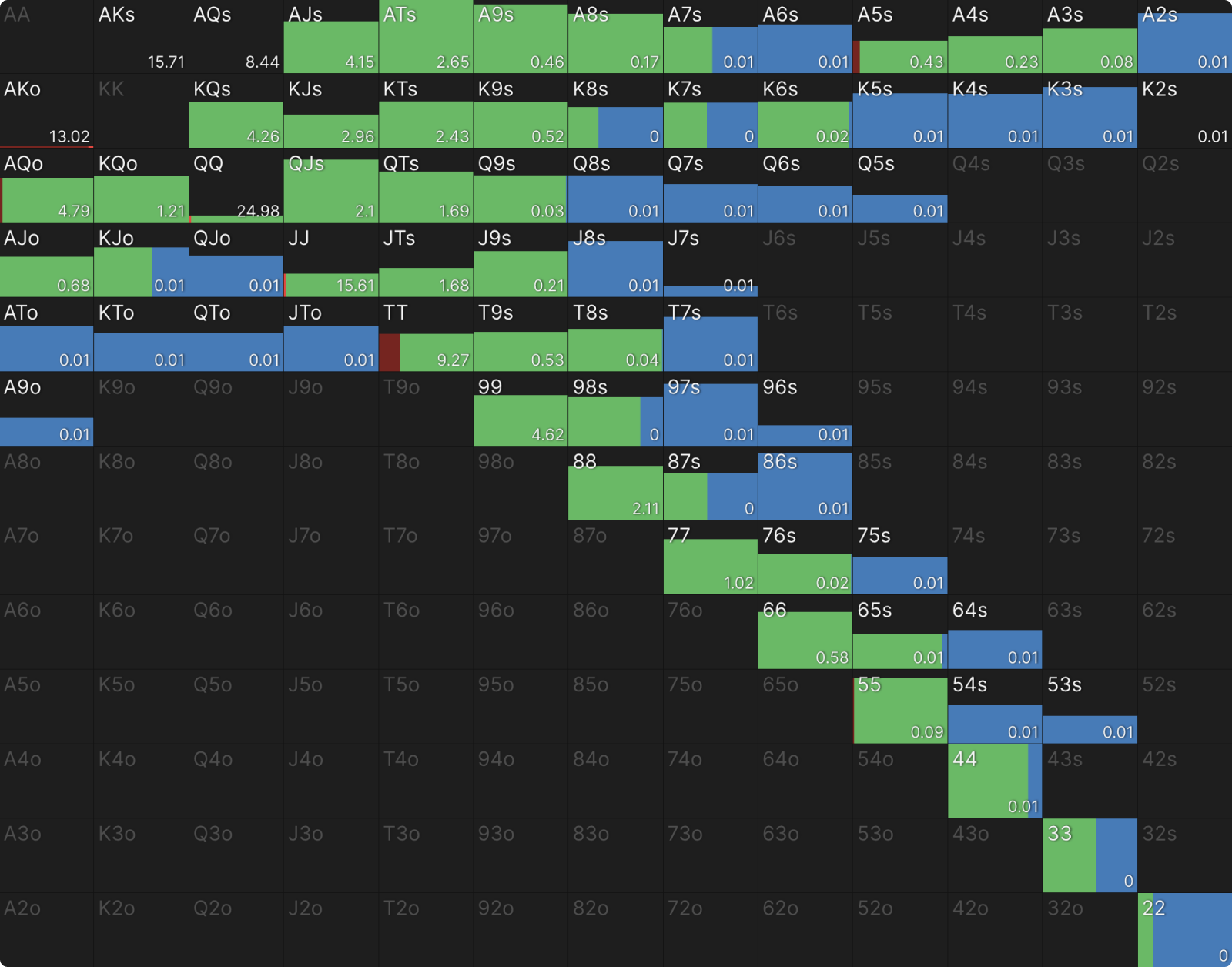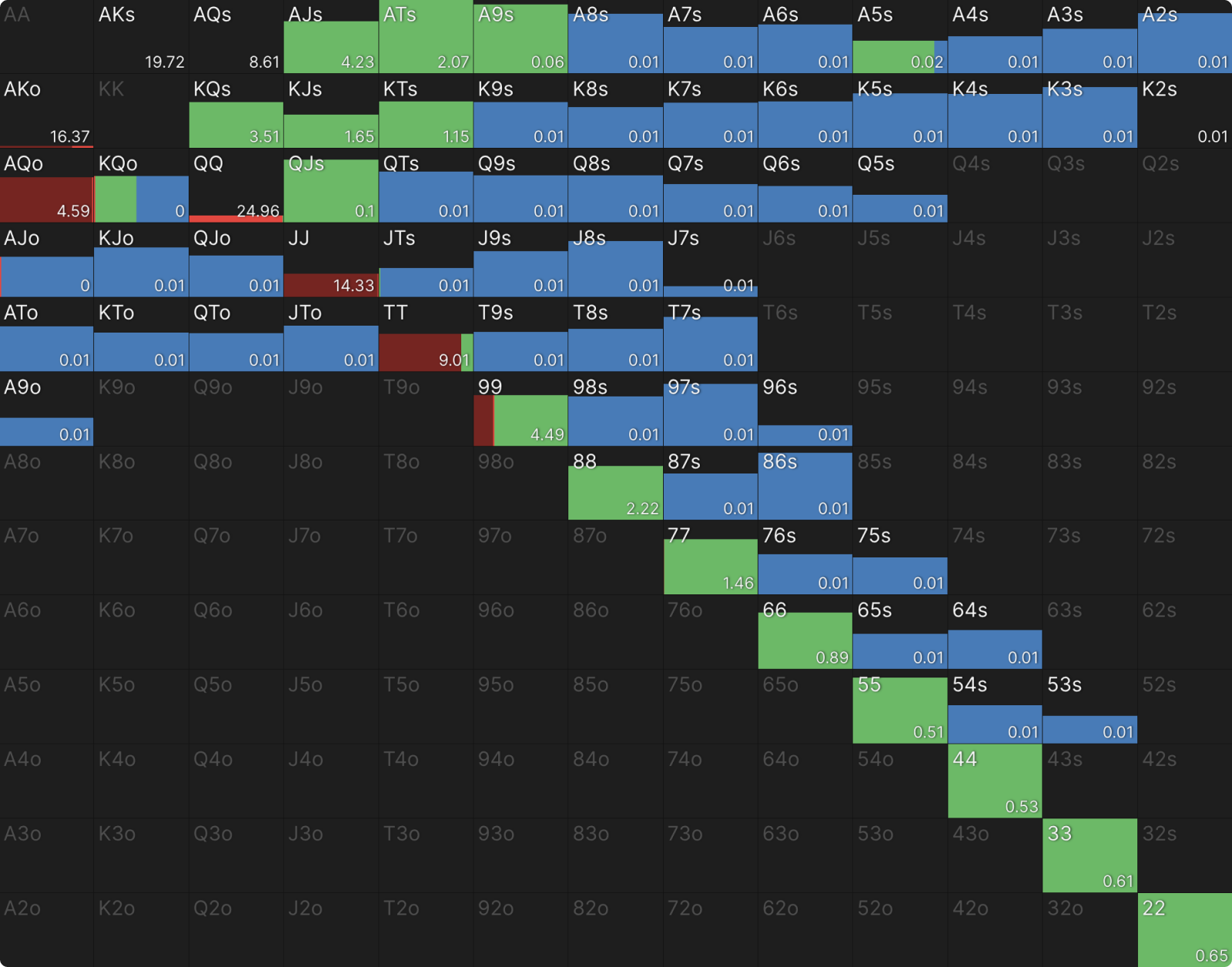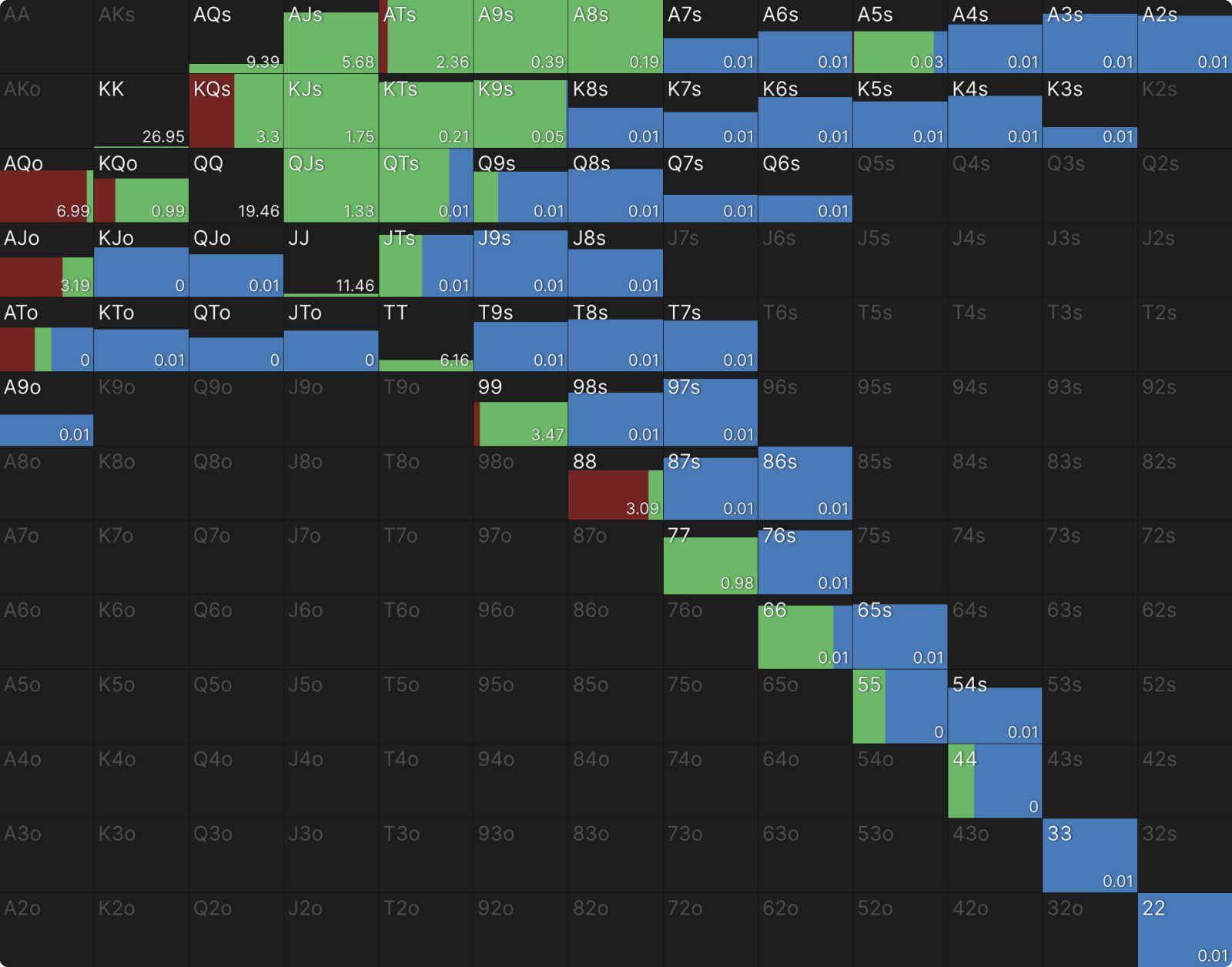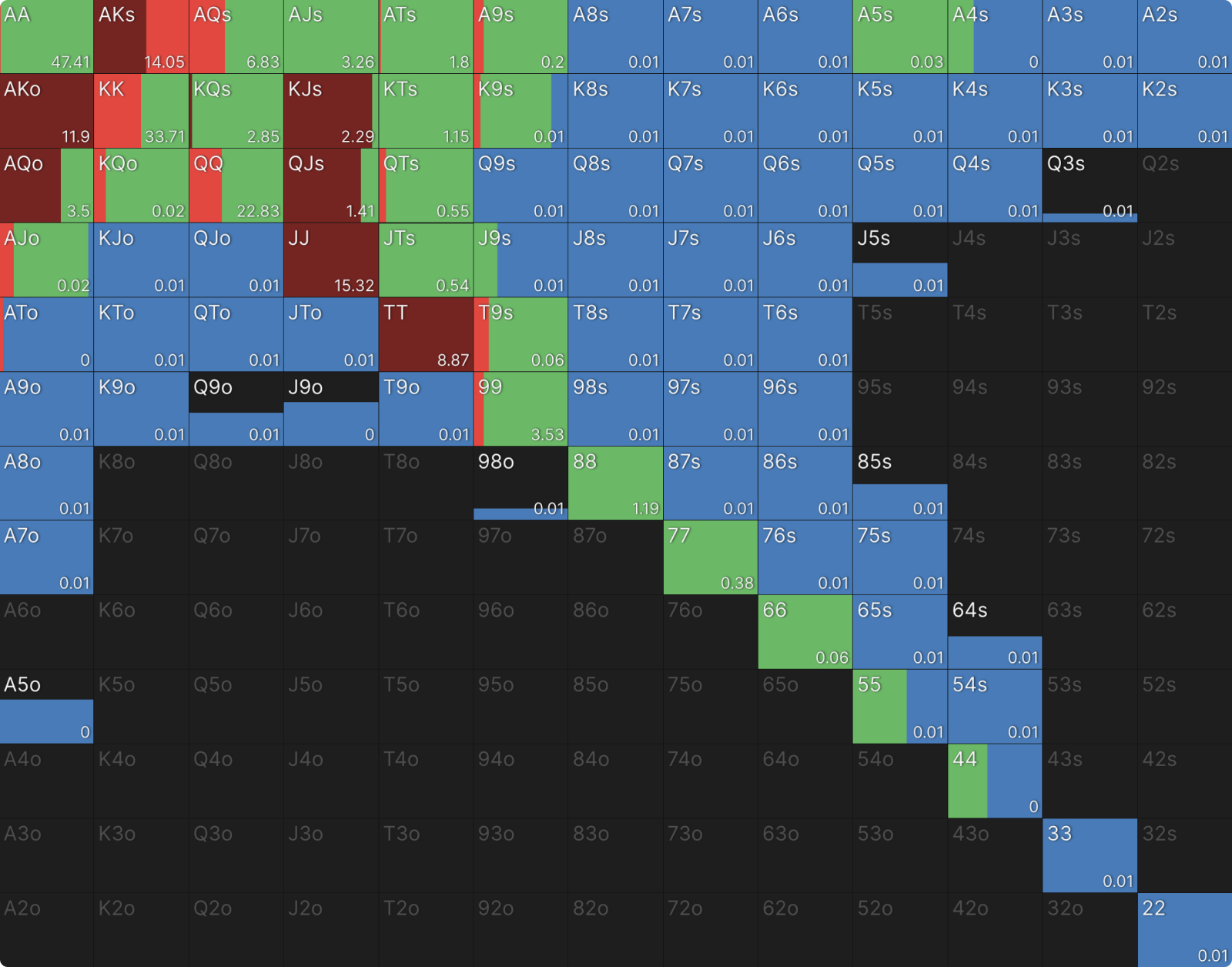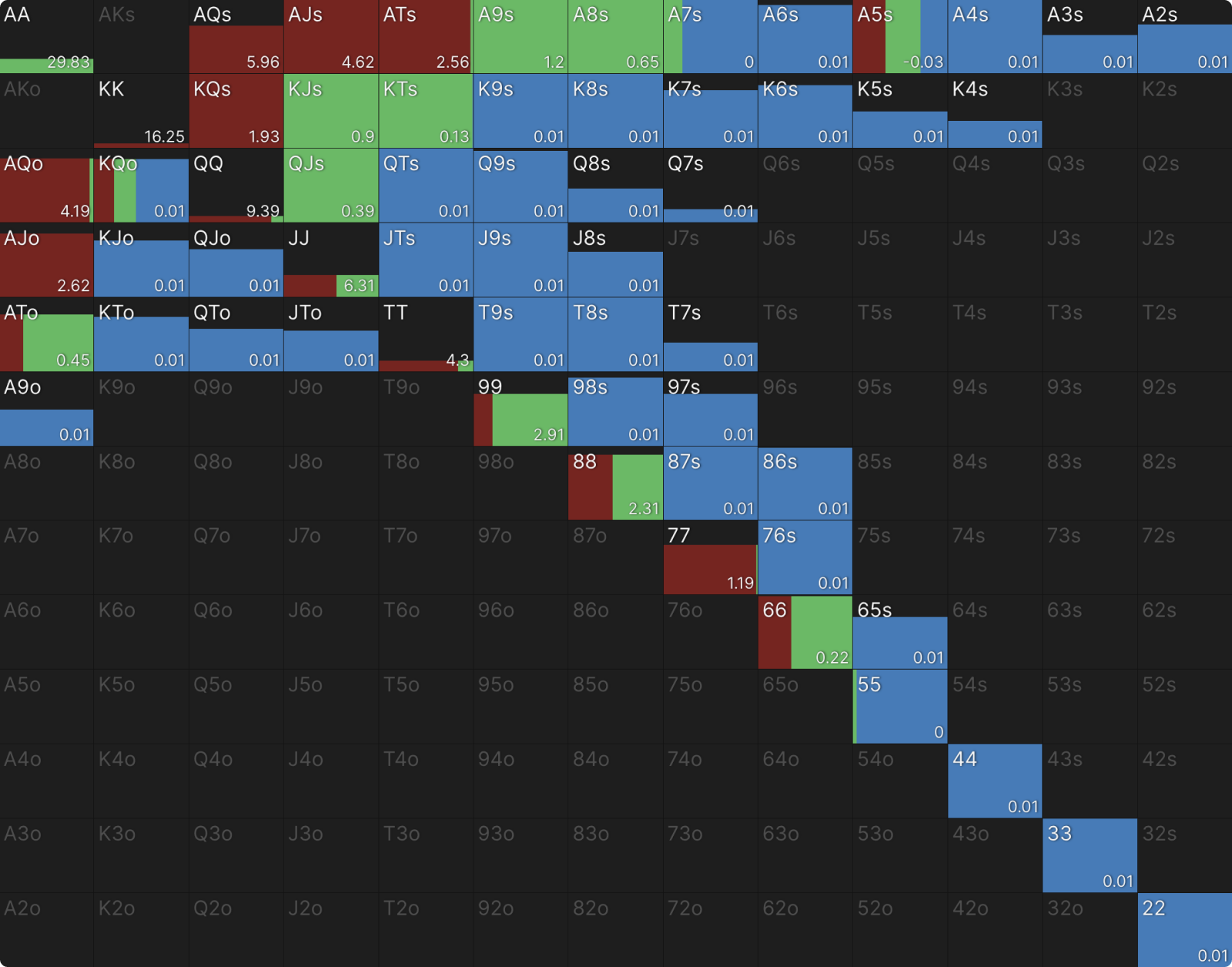Responding to BB Squeezes
You open raise, someone calls, and the BB squeezes. How should you construct your strategy?
Once there has been a raise and one or more calls, re-raising is an appealing option for the BBBB
The minimum forced betting increment in a game of poker (bb). Can also refer to the position ‘big blind’ (BB), which is forced to put in the largest blind preflop, typically after the small blind. The big blind position acts last preflop and ats first postflop.. Although they are unlikely to take the potPot
The total value of chips that have been bet in the present hand. down immediately, they have a good chance of folding out at least one opponent, trapping a lot of dead moneyDead money
Money in the pot put in by players that cannot win the pot. in a pot they can then contest heads up.
Consequently, it behooves you to learn how to defend against BB squeezes, whether you are the original raiser or one of the callers. This article will examine two formations – an UTGUnder the gun (UTG)
The position to the immediate left of the big blind. The under the gun player acts first pre-flop. raise followed by BTN and SB calls and a COCutoff (CO)
The player to the immediate right of the button and left of the hijack. The cut ff is the second last position to act post flop. raise followed by BTN and SB calls – to extrapolate general strategic principles to guide your response to BB squeezes in any formation.

Original Raise in Late Position
The CO opens, BTN and SB calls, BB squeezes. This chart shows their response to the squeeze:
First, note that four-betting less than all-in is a rarely used option by any player, at any stack depth. By the time the BB squeezes, there are more than 20bb in the pot, with no one holding an especially strong range. Four-betting and then folding to a shove is unappealing in such a large pot, as is offering attracting calling odds to the BB, who should be squeezing a linear range full of robust, high equity hands.
- For CO and BTN, calling gets less appealing as stacks get shallower, even though the BB’s squeeze offers slightly better odds. Shallower stacks reduce the value of playing post-flop in position, shifting these players increasingly toward a shove-or-fold strategy, with both of them folding somewhat more often as stacks get shallower.
- SB, being out of position and holding the weakest range of the three, rarely continues to the squeeze. Unlike the in position players, SB continues more often as stacks get shallower, with both shoving and calling becoming more appealing. The SB’s main liability is having the most capped range of anyone; they had a tremendous incentive to squeeze all their strongest hands the first time around. With deeper stacks, this makes shoving unappealing and hinders post-flop equity realization. As stacks get shallower, SB’s capped range is less of a liability, as they can take advantage of closing the action to either get all in pre-flop or play post-flop with a very low SPR and realize most or all of their equity.
- BTN also has a more capped range than CO, yet they continue more often to the squeeze. The equity realization benefits of position offset the disadvantage of a capped range. Unlike CO, BTN gets to act with the knowledge that one player has already folded, guaranteeing them position after the flop. Even if SB overcalls, that is less of a problem for BTN than BTN overcalling would be for CO, because an overcaller from out of position will realize less equity.
Original Raise in Early Position
One key difference with the raise coming from UTG rather than CO is that the original raiser’s range is significantly stronger than BTN’s. Consequently, they fold to a squeeze less than BTN does, whereas the CO folded more. Even though BTN’s range is stronger facing an UTG open than a CO open, they still act with the knowledge that four players have folded, giving them more leeway to enter the pot than UTG enjoys.
This is also why UTG re-raises more often than CO did, and why a small four-bet is a more viable strategy for them.
BTN, conversely, shoves less than they did when the original raise came from the CO and folds more, even after UTG has folded. This is because BB’s range for squeezing into an UTG open is significantly stronger (7.9% of hands, with 100bb stacks, vs 13% into a CO open). The BTN’s range is somewhat stronger, but not as much so, because they were counting on playing in position after the flop to boost the value of some more marginal hands.
As when the raise came from late position, BTN has a higher ratio of calls to four-bets than UTG. This is again in part because their range is less nutty but also because their position reduces the need to deny equity to the player behind them.
When the Original Raiser Calls the Squeeze
A four-bet from the original raiser almost always drives out the players behind them. A call often results in a call behind, though almost never a 4-bet. Even at 100bb stacks, a call from the original raiser represents considerable strength, including the risk of slowplayed Aces. Players who chose not to re-raise the first time around can not credibly represent a monster hand later, and nothing else is strong enough to raise into a strong squeezing range and a strong calling range.
A call from the original raiser represents considerable strength, including the risk of slowplayed Aces.
CO Open, BTN and SB calls, BB raises, CO Calls:
UTG Open, BTN and SB calls, BB raises, UTG Calls:
Interestingly, the BTN calls less often when UTG calls than when they fold, but SB calls more often. SB’s original calling range was already built around hands that performed well multi-way, whereas BTN’s allowed for the possibility of a heads up pot. Thus, SB is not caught holding as much dead weight that must fold despite the alluring pot odds.
This is less true when the original raise comes from the CO, because SB’s range overall is much weaker. Facing a late position raise, they had more incentive to squeeze the first time around, except at the very deepest stack sizes. Consequently, they have very few hands strong enough to stand up to two strong ranges – none at all, with 30bb stacks.
Things are a bit less bleak for SB if it’s the BTN who calls the squeeze. They still don’t overcall much, but the BTN’s call is less intimidating than the CO’s.
What Do These Ranges Look Like?
Facing a squeeze, all players fold their worst hands. They four-bet or shove most of their best hands, keeping in mind that, depending on the pre-flop action, they may not have many such hands. The very biggest pairs call as a trap. Beyond that, we can distinguish between two types of ranges: those where the pot may go heads up, and overcalling ranges, where the pot will definitely be multiway if it goes to the flop at all.
For an example of the former, here is the BTN’s range for calling a BB squeeze with 100bb stacks if the CO raiser folds in front of them:
This range contains not just the hands that perform well multiway – pocket pairs and suited broadwaysBroadway
A ten through ace straight. “Broadway cards” can also be used to describe any 10, J, Q, K, or A card. – but also some smaller suited connectors and offsuit broadways which hold their equity poorly multiway. This is because the BTN will often play heads up in position against the BB in this scenario.
If the CO has already called the squeeze, then the small suited connectors and offsuit broadways drop out of the range, leaving mostly pocket pairs and suited broadways:
The very best offsuit broadways shove and most of the rest fold. Even when the CO has folded, BTN is eager to shove these offsuit broadway hands. With 60bb stacks, they shove most of them:
These patterns persist in most other formations: some suited connectors and offsuit broadways are viable when the pot may go heads up, but these hands mostly shove or fold once another player has called.
Suited connectors and offsuit broadways are viable when the pot may go heads up, but these hands mostly shove or fold once another player has called.
Trapping is an important part of the original raiser’s calling strategy. Whenever they have a significant calling range, it includes AA and KK, often at full frequency. Here is the CO’s response to a squeeze with 100bb stacks:
Their call rarely induces a re-raise, but these hands are resilient enough to invite overcalls. Even with 100bb stacks, a squeezed pot that goes multiway will result in a very low SPR post-flop, making these big pairs easy to play.
BTN rarely shows up with big pairs after calling the initial raise, but when they do, as with 40bb stacks facing a CO raise, it’s a pure call facing a BB squeeze and CO fold:
Exploitative Adjustments
These strategies assume well-constructed ranges for all players but, like all GTO strategies, are robust against a wide variety of opponent strategies. Even so, mistakes by one or more other players can create exploitative opportunities for greater profit.
There are too many potential mistakes to explore them all here, but one is common enough to address. Many players call raises with overly wide, weak ranges, which increases the incentive for their opponents to re-raise and drive them out to trap their dead money in the pot. If the BTN and/or SB call too wide the first time around, the BB should squeeze a wider range (still linear and value-focused, but with a lower threshold for how much value they require to raise).
The original raiser should then continue more often, with BB’s wider range (and the weaker range(s) behind) incentivizing both more calls and more four-bets. A player who called too wide the first time might be expected to overcall too wide as well, further increasing the incentive of the original raiser to raise again to deny them their equity.


There are too many potential mistakes to explore them all here, but one is common enough to address. Many players call raises with overly wide, weak ranges, which increases the incentive for their opponents to re-raise and drive them out to trap their dead money in the pot. If the BTN and/or SB call too wide the first time around, the BB should squeeze a wider range (still linear and value-focused, but with a lower threshold for how much value they require to raise).
The original raiser should then continue more often, with BB’s wider range (and the weaker range(s) behind) incentivizing both more calls and more four-bets. A player who called too wide the first time might be expected to overcall too wide as well, further increasing the incentive of the original raiser to raise again to deny them their equity.
Conclusion
Responding to squeezes requires close attention to absolute and relative position, which influence both the types of hands you should call with and the extent to which you should be concerned with driving out other players. Hands that most benefit from heads up pots (big pairs, though not the biggest, and offsuit broadway cards) have more incentive to raise, especially when moving all in is a reasonable option, which it can be even with quite deep starting stacks. Smaller pairs and suited broadway hands have more flexibility to call, as they hold their equity better multi-way and play better after the flop.
Deeper stacks incentivize more calling and less four-betting from in position players, while shallower stacks incentivize more calling and less folding from out of position players.
Author
Andrew Brokos
Andrew Brokos has been a professional poker player, coach, and author for over 15 years. He co-hosts the Thinking Poker Podcast and is the author of the Play Optimal Poker books, among others.

